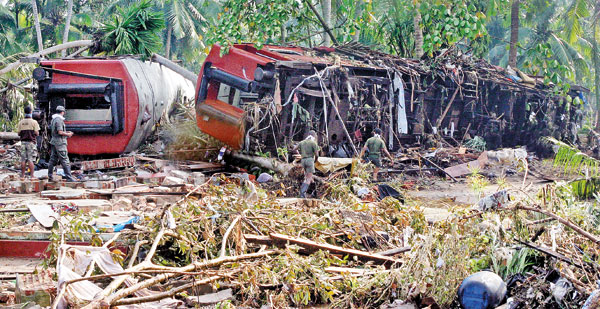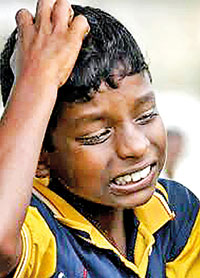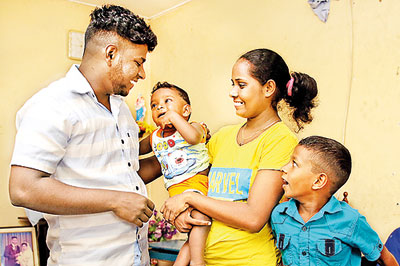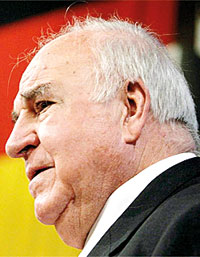Sunday Times 2
A tragedy beyond belief
View(s):- The face of tsunami heartbreak
It was the worst natural disaster this country has faced. On Boxing Day, December 26, 2004, a magnitude 9.0 earthquake off the coast of Sumatra, triggered a tsunami that devastated Sri Lanka. The killer waves that swept through the country’s coastline on the East, North and South took the lives of more than 30,000 people.
More than 1,700 people died in the Peraliya train tragedy alone when a packed coastal train heading to Galle–
the Samudra Devi, was caught up in the massive wave. It is considered the biggest train disaster in the world.
By Kumudini Hettiarachchi
It was the worst natural disaster to engulf many Southeast Asian nations in recent history – the tsunami of December 26, 2004!
For Sri Lanka, the ‘face’ of the tsunami which launched a generous sea of empathy and sympathy was that of 10-year-old Asitha Rukshan Fernando of Koralawella, Moratuwa.

Asitha’s tear-streaked face crumpled up in heartrending agony at his mother’s funeral, splashed across hundreds of newspapers and magazines across the world, epitomized the heartbreak of the tsunami.
The tsunami of Boxing and Poya Day devastated the coastline, tearing apart families and leaving a trail of death and destruction. Some children who went “missing” after the tsunami have never been found again, though their parents are hopeful that they are alive and are being looked after by someone else.

Moving on: Young Asitha
More than 30,000 men, women and children died in the tsunami while numerous others were affected both physically and mentally, leaving them stunned and bewildered, with a large number of homes, schools, hotels and businesses being destroyed or badly damaged.
Many of the reports and magazines which portrayed the tear-streaked face of Asitha at his mother Ranjini’s funeral, did not identify him. It was the Sunday Times which went in search of him, found him with the help of Sr. Jacintha Silva of the Sisters of Charity, Jesus and Mary from a convent close to Asitha’s home, and wrote a piece which brought help to his family from a lot of people.
For Asitha, more tragedy struck the next year – as this humble family which survived through fishing made ready to hold an alms-giving in their mother’s name, father Ivan died after falling off a moving train. The heavy responsibility of looking after Asitha and also his sibling with special needs fell on their elder sister.
However, throughout the years, in response to the Sunday Times articles, numerous people steadfastly responded in cash and kind, one even donating a house to the family.
Nineteen years after the terrible tragedy of the tsunami and as Sri Lanka marks its 75th Independence Day, Asitha is a responsible young man, having a family of his own.

Happy family: Asitha and Sashinika with Venush and Ayesh. (Pic by M.A. Pushpa Kumara)
| He gave back: Helmut Kohl Former German Chancellor Helmut Kohl, was a frequent visitor to Sri Lanka and was among the many thousands on the coast caught up in the tsunami. He had been undergoing ayurvedic treatment in a villa in Thalpe and being on the third floor escaped unscathed. He was subsequently airlifted by a military helicopter to the Katukurunda airbase and then driven to Colombo.  Helmut Kohl “On Sunday morning at about 9 a.m. I stood on the balcony and saw that the sea was changing. It sounded very different,” Kohl wrote in Germany’s Bild newspaper. He says, “Then a huge wave rose up. This wave developed enormous power. People were running around screaming. The wave ripped everything away. Wooden huts and buildings that were not solidly built were just washed away. “Only when we saw that the entire lower and second floors of our hotel were flooded did we realize the full extent of the catastrophe,” he said. “It brought back images of the war, which I lived through as a boy. It looked like after a heavy bombardment.” In the aftermath, the Chancellor through funding from the German government provided boats for fishermen and houses for tsunami victims, as well as a community centre, montessori and tsunami warning tower. His biggest contribution was a 600-bed maternity hospital in Karapitiya with Rs 900 million from the Helmut Kohl Foundation, in place of the Mahamodara Hospital which was badly damaged by the tsunami. | |

